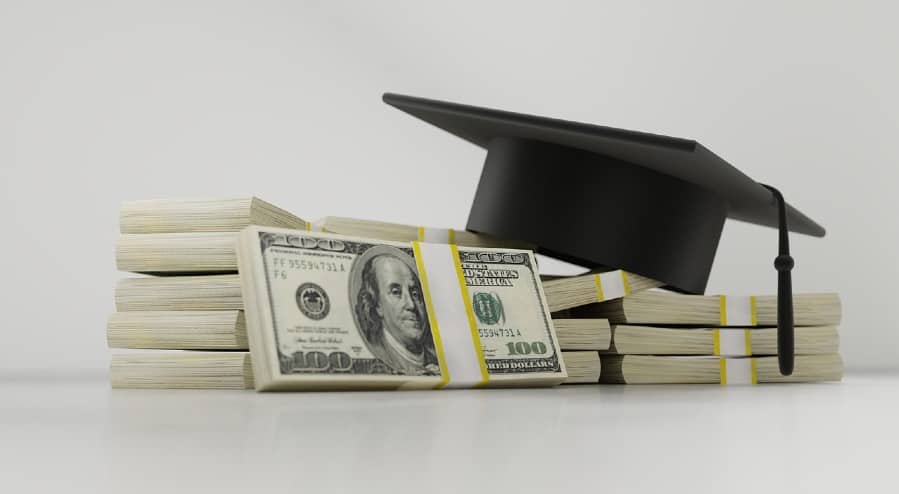After graduating or leaving college, many students face a difficult choice: Try to pay off their student loans as fast as possible to save on interest, or enroll in an income-based repayment plan, which offers affordable payments based on their income and forgives any balance remaining after 20 or 25 years.
There are pros and cons to each option, and trying to discern the better path can be daunting. That’s why University of Colorado Boulder’s Yu-Jui Huang and Saeed Khalili, a former graduate student in financial mathematics, along with Dublin City University’s Paolo Guasoni, decided to throw a little mathematical muscle at the problem.The researchers developed a novel mathematical model for determining the optimal student loan repayment strategy, based on an individual borrower’s specific circumstances. In April, they published a paper outlining their approach in the SIAM Journal on Financial Mathematics.
Instead of choosing one of these distinct options and sticking with it, some borrowers should consider combining the two to create their own hybrid repayment strategy, the researchers found.
“The rule of thumb is that if your balance is really small, just pay it as quickly as possible, and if your balance is large, then enroll in an income-based scheme right away,” said Huang, a CU Boulder assistant professor of applied mathematics who specializes in mathematical finance and applied probability.
“We find that, between these two extremes, there’s actually a third strategy, which is, you should pay as much as possible over the first several years. And after that, switch to an income-based repayment scheme.”
The rule of thumb is that if your balance is really small, just pay it as quickly as possible, and if your balance is large, then enroll in an income-based scheme right away.”
The model incorporates basic, fundamental mathematics, Huang said, but is likely the first of its kind for student loans. Past studies were mostly empirical, estimating the actual effects of student loans on the economy and on individual borrowers. Very little research has been conducted through the lens of mathematics on the best strategy a student borrower should employ, he said.
The researchers saw an opportunity to contribute to the academic literature while at the same time helping borrowers make savvy repayment decisions. Student loans now total roughly $1.7 trillion and affect nearly 45 million borrowers in the United States, hampering their ability to buy homes, start businesses and attend graduate school.
“We made the model as simple as possible,” Huang said. “For many students, this can save them money.”
The model takes into account the fact that borrowers have to pay income tax on any loan amount that’s forgiven under an income-based repayment plan, as well as the compounding interest rates of various student loans. It helps borrowers determine when they should stop making regular payments and switch to an income-based repayment scheme, a point in time called the critical horizon.
“The critical horizon is the time at which the benefits of forgiveness match the costs of compounding,” the researchers write.
Already, the researchers are considering ways to improve their model. For one, they hope to incorporate more randomness into the model, which right now asks borrowers to take their best guess at their future income level, tax rate and living expenses. They also want to consider lifestyle changes that may affect borrowers’ motivation for paying off student loans, such as getting married, buying a house and having children.
“In practice, what people say is, ‘Yes, I’m going to be a dentist. Looking at past data, I know my starting salary should be this and, after a few years, my salary should grow to this particular stage and so on,’” Huang said. “The purpose of introducing the randomness here is because some dentists become really rich in five or 10 years, and some others are not so rich. Even if you look at the data, you can’t be quite sure which category you will eventually fall into.”
Though the researchers have no plans themselves to turn their formula into some sort of widely accessible calculator, they’re open to existing student loan repayment calculators adopting their model so that I can help as many borrowers as possible.
“Right now, students don’t really have any kind of concrete or rigorous guidelines—they may just have these general impressions but there’s no math to justify those,” Huang said. “We have created a simple model, but one that’s undergone a very rigorous mathematical treatment.”
If our reporting has informed or inspired you, please consider making a donation. Every contribution, no matter the size, empowers us to continue delivering accurate, engaging, and trustworthy science and medical news. Independent journalism requires time, effort, and resources—your support ensures we can keep uncovering the stories that matter most to you.
Join us in making knowledge accessible and impactful. Thank you for standing with us!

